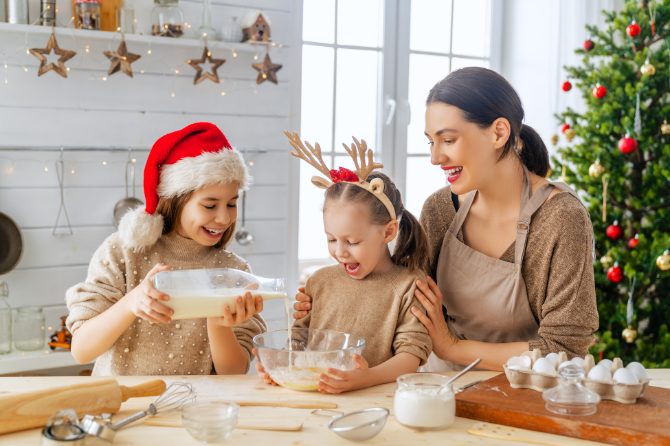
The holiday season is a time of joy, festive decorations, family gatherings, and delicious feasts. This time of year brings people together, often centered around the heart of the home—the kitchen. Amid the laughter and aromas of festive meals, and culinary adventures in the kitchen it’s crucial to be aware of the potential risks, mishaps and cooking related injuries that can lead to unexpected trips to the ER. Cooking-related injuries can put a damper on the festivities, but with a little caution and preparation, you can ensure a safe and enjoyable cooking experience. We will explore some common kitchen injuries, the tools that often lead to accidents, the most common burns, types of accidents, and essential tips to prevent injuries in the kitchen to ensure a safe and enjoyable culinary experience and holiday season surrounded by your friends and family.
Let’s discuss the statistics and identify the primary types of injuries that occur during holiday cooking.
What is the number one injury in the kitchen?
When it comes to kitchen injuries, cooking-related injuries vary, but statistically, cuts and lacerations top the list. In the chaos of holiday meal preparation, it’s easy to underestimate the risks associated with sharp knives and kitchen tools. Cuts often result from hurried chopping and improper handling of knives. Sharp knives are not the only source of cuts, broken glass and even can lids can cause painful lacerations. It’s crucial to handle knives and other sharp objects with care, keeping them properly stored, focus on proper cutting techniques and using cutting boards to provide a stable surface for chopping and slicing. Utilizing the right knife for each task and keeping blades sharp can significantly reduce the likelihood of accidents. Additionally, practicing mindfulness in the kitchen and avoiding distractions while handling sharp objects can go a long way in preventing cuts.
What kitchen tool causes the most injuries?
Certain kitchen tools pose higher risks than others. We’ll discuss the culprit behind numerous injuries and offer alternative methods or safety precautions to mitigate the dangers.
While various kitchen tools can cause injuries, one notorious culprit is the mandoline slicer. Its sharp blades and the speed at which it operates make it a potential hazard, particularly for inexperienced cooks. Several studies highlight the prevalence of injuries related to mandoline slicers, emphasizing the need for caution when using this tool.
To mitigate the risks, consider using a cut-resistant glove when operating a mandoline slicer. This provides an extra layer of protection for your hands. Additionally, investing in a model with safety features, such as hand guards, can reduce the likelihood of accidents.
What is the most common burn in the kitchen?
Burns are prevalent in kitchens, especially during holiday cooking. We’ll identify the most common types of burns, whether from hot surfaces, liquids, or steam, and share tips on how to treat and prevent them.
Burns are a frequent kitchen injury, and during the holidays, the risk is heightened with the extensive use of hot surfaces, liquids, and steam. Scalds from hot liquids are particularly common, often occurring when lifting pot lids or pouring hot beverages.
To prevent scalds, ensure that pot handles are turned inward on the stove, away from the edge. When pouring hot liquids, maintain a steady and controlled pace to minimize splashing. Using oven mitts or potholders designed for high temperatures is crucial for protecting hands from burns.
What are the common types of accidents in a kitchen?
Beyond cuts and burns, various accidents can occur in the kitchen. Slips and falls are among the most prevalent. Spills, whether from liquids or dropped ingredients, contribute to slippery surfaces. A significant number of kitchen accidents during the holidays result from slips and falls.
To minimize the risk of accidents, promptly clean up spills and ensure the kitchen floor is dry. Using slip-resistant mats in high-traffic areas can also provide additional traction. Moreover, organizing the kitchen efficiently and keeping pathways clear can reduce the likelihood of tripping over objects.
What things should you do in the kitchen to prevent injury?
Prevention is key to a safe kitchen environment. We’ll provide a comprehensive list of safety measures, including proper tool usage, handling hot surfaces, and maintaining a clutter-free workspace.
Prevention is key to a safe kitchen environment. Here’s a comprehensive list of safety measures to implement during holiday cooking:
- Organize Your Workspace: Maintain a clutter-free workspace to minimize the risk of tripping or knocking over items.
- Proper Tool Usage: Use kitchen tools for their intended purposes, and handle them with care. Avoid using knives or other utensils as makeshift tools.
- Appropriate Attire: Wear appropriate clothing, avoiding loose sleeves or hanging accessories that could catch fire or get caught in kitchen equipment.
- Fire Safety: Keep a fire extinguisher in the kitchen and know how to use it. Be cautious with flammable materials and never leave the stove unattended.
- First Aid Kit: Have a well-equipped first aid kit readily available in the kitchen. Familiarize yourself with its contents and know basic first aid procedures.
- Timers and Alarms: Set timers for cooking tasks to avoid overcooking and potential hazards. Ensure smoke alarms are functional and have fresh batteries.
- Supervise Children: If children are present in the kitchen, provide age-appropriate tasks and closely supervise them. Keep sharp objects and hot surfaces out of their reach.
Implementing these precautions can significantly contribute to a safer cooking environment, allowing yourself to enjoy the holiday festivities without the worry of kitchen-related injuries.
Conclusion:
As the holiday season approaches, it’s crucial to prioritize kitchen safety. By understanding the common injuries and implementing preventive measures, we can ensure that the joy of cooking and sharing meals during this festive time remains untarnished by accidents.
Remember, safety in the kitchen is a collective responsibility. Whether you’re an experienced chef or an occasional cook, being mindful of potential hazards can make a significant difference. If you or your loved one experiences any culinary-related injuries during the holiday season, visit your local OakBend for fast reliable care. You can find the nearest OakBend ER by viewing our locations.
Leave a reply







